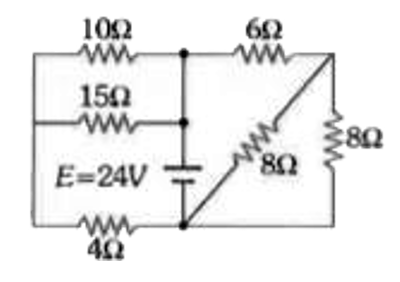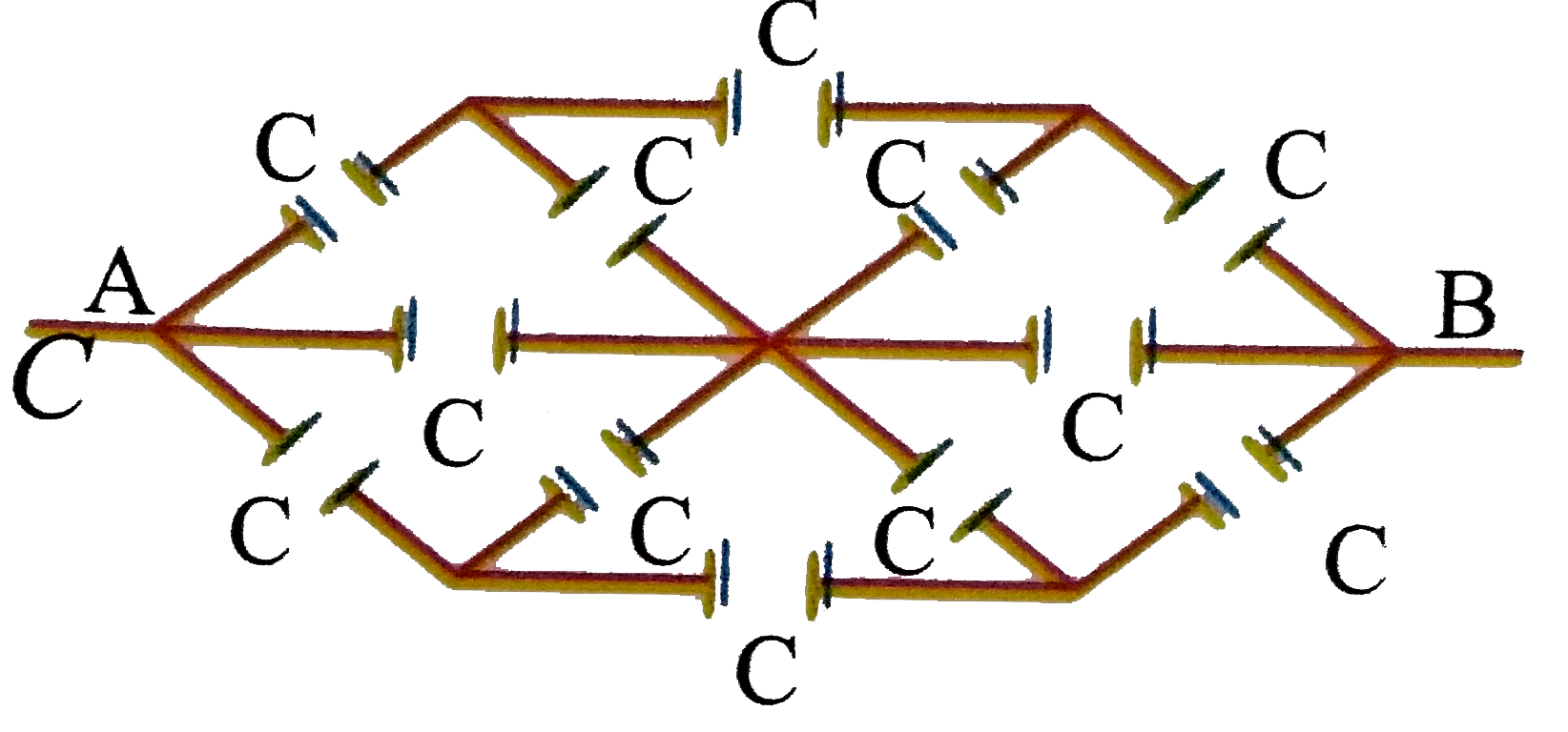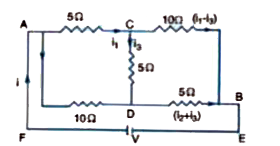Obtain Thevenin’s and Norton’s equivalent circuits at AB shown in Fig..
Thevenin’s Equivalent Circuit We will find the value of Vth by using two methods i KVL and ii mesh analysis.a Using KVLIf we apply KVL to the first loop of Fig. we get 80 − 5 x − 4y = 0 or 5x + 4y = 80 ...i From the second @ loop we have − 11 x −y + 20 + 4y = 0 or 11x − 15y = 20 ...ii From i and ii we get x = 10.75 A; y = 6.56 A and x −y = 4.2 A. Now Vth = VAB i.e. voltage of point A with respect to point B. For finding its value we start from point B and go to point A either via 3 Ω resistance or 4 Ω resistance or 5 + 8 = 13Ω resistance and take the algebraic sum of the voltage met on the way. Taking the first route we get VAB = − 20 + 3 x −y = − 20 + 3 × 4.2 = − 7.4 V It shows that point A is negative with respect to point B or which is the same thing point B is positive with respect to point A.b Mesh Analysis [Fig.]I1 = 1280/119 = 10.75 A ; I2 = 500/119 = 4.2 A Again VAB = − 20 + 12.6 = − 7.4 V Value of Rth For finding Rth we replace the two voltage sources by short-circuits. ∴ Rth = RAB = 3 || 8 + 4 || 5 = 2.32 Ω The Thevenin’s equivalent circuit becomes as shown in Fig.. It should be noted that point B has been kept positive with respect to point A in the Fig.
Related Solutions
For the circuit shown in fig. the equivalent resistance between A and C is
 View Solution
View SolutionFor the circuit shown in fig. the equivalent resistance between A and C is
View SolutionIn the circuit shown in the fig the equivalent resistance between a and b is R_(ab) and the equivalent between a and c is R_(ac) . find the ratio R_(ab) : R_(ac) .
View SolutionIn the circuit shown in the fig. the equivalent resistance between a and b is R_(ab) and the equivalent between a and c is R_(ac) . Find the ratio R_(ab): R_(ac) .
View Solutionचित्र में दिखाये गये परिपथ में, वि. वा. बल 24V के स्त्रोत के । परितः परिपथ का तुल्य प्रतिरोध ज्ञात करें
 View Solution
View SolutionThe equivalent capacitance of the circuit shown in the figure is.
 .View Solution
.View SolutionIn the circuit shown in Fig. (b) calculate the equivalent resistance between the points A and B.
 View Solution
View SolutionFind the equivalent resistance between A and B in the circuit shown in the fig. (a).
View SolutionThe equivalent resistance between the points A and B in A the circuit shown in Fig. is
 View Solution
View SolutionCalculate the equivalent resistance between the points A and B in the circuit shown in Fig. (a)
 View Solution
View SolutionCalculate equivalent resistance between A and B of the circuit shown in fig.
View SolutionFind the equivalent resistnace of the circuit shown in fig between the points A and B
View SolutionFind the equivalent resistance between the points A and B of the circuit shown in the fig.
 View Solution
View SolutionCalculate equivalent resistance between A and B of the circuit shown in fig.
 View Solution
View SolutionWhat is the equivalent resistance between point A and C in the circuit shown in fig. ?
 View Solution
View SolutionWhat is the equivalent resistance between point A and C in the circuit shown in fig. ?
 View Solution
View SolutionCalculate the equivalent resistance between the points in the circuits shown in (Fig. 3.19)
(a) and (Fig. 3.19) (b).
 .View Solution
.View SolutionIn the circuit shown in Fig. 7.45,
 View Solution
View SolutionIn the circuit shown in Fig. 7.45,
View Solution
